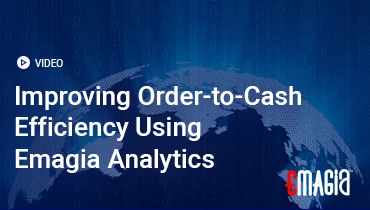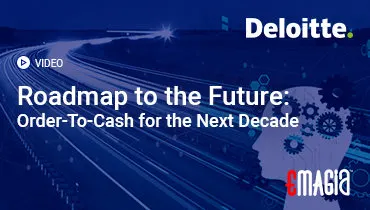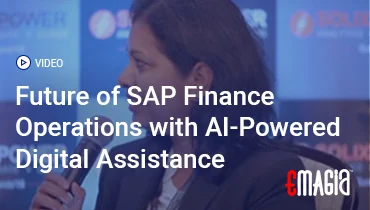In the fast-paced world of business-to-business (B2B) transactions, getting paid on time and with the right information is critical. Many companies still rely on outdated, manual processes like paper checks and mailed remittance slips, leading to delays, errors, and unnecessary costs. The answer to this challenge lies in a powerful, automated solution known as EDI payments, with the EDI 820 transaction at its core. This comprehensive guide will demystify the entire process, explaining what an EDI payment is, how the edi 820 definition helps streamline financial operations, and why your business can’t afford to ignore this technology.
This article will serve as your definitive resource for understanding the `edi 820`, from its technical specifications to its tangible benefits for both accounts payable and accounts receivable teams. We’ll explore how this electronic document facilitates a more efficient, secure, and accurate financial ecosystem, helping you to improve cash flow and strengthen trading partner relationships.
What is an EDI Payment? A Foundational Understanding of Financial EDI
To grasp the significance of the EDI 820, we must first understand the fundamental concept of an edi payment. In its simplest form, an EDI payment is the electronic transfer of payment-related data between business partners using a standardized format. This process is a key part of financial edi, a broader system for exchanging financial documents electronically. It’s the modern, digital evolution of sending a check and a detailed explanation of what that check is for. Instead of a physical envelope, all the information is sent securely from one computer system to another, without any human intervention.
The core purpose of the edi payment meaning is to eliminate the need for manual tasks associated with traditional payment methods. This includes everything from printing and mailing checks to manually entering payment information into an accounting system. By automating these steps, businesses can save time, reduce costs, and drastically minimize the potential for human error. It’s a crucial tool for any company looking to improve its operational efficiency and stay competitive in the digital age.
The Power of the EDI 820: Payment Order and Remittance Advice
The `EDI 820` is formally known as the “Payment Order/Remittance Advice” and is a cornerstone of electronic financial transactions. It is a dual-purpose document. A buyer can use it to instruct their bank to make a payment to a seller (the payment order), and it also provides the detailed information that explains which specific invoices are being paid (the edi remittance advice). The `edi 820` is the key that unlocks fully automated cash application for the payee.
Historically, a buyer would send a check, and the seller’s accounts receivable team would receive it, match it to a separate remittance advice, and manually apply it to the open invoices in their system. The `edi 820` bundles all of this information into a single, standardized electronic document. This means that when the funds arrive via an electronic transfer, the corresponding remittance data is already there, ready to be automatically processed. This makes the `820 edi` a game-changer for cash flow and reconciliation.
The Anatomy of an 820 File: Understanding the EDI 820 Format and Specification
The power of the `edi 820 file format` lies in its detailed and structured layout. It is not just a random collection of data; it follows a precise set of rules that ensures every system, regardless of the software vendor, can understand and process the information correctly. The file is a text-based document divided into various segments, each dedicated to a specific type of information. This standardization is what allows for seamless, machine-to-machine communication.
At a high level, the `820 file` contains several key sections: an envelope that identifies the sender and receiver, a header with general payment information, a detail section listing the invoices being paid, and a summary. Let’s delve into the crucial segments that make up the edi 820 specification:
- BPR (Beginning Segment for Payment Order/Remittance Advice): This is the starting point of the transaction set. It provides a summary of the payment, including the total amount, the payment method (such as an ACH transfer), and a transaction handling code.
- RMR (Remittance Advice A/R Open Item Reference): This is the heart of the `edi remittance` process for the recipient. This segment links the payment to specific invoices, providing the invoice number, the amount being paid for that invoice, and any adjustments or deductions.
- N1 (Name): This segment identifies the parties involved in the transaction. It is used to specify the payer, the payee, and any third-party entities like banks.
- REF (Reference Numbers): This segment is used for various reference numbers that are essential for tracking, such as a check number, a remittance ID, or a corporate payment order ID.
- DTM (Date/Time Reference): As the name suggests, this segment specifies important dates related to the payment, such as the date the payment was sent.
This structured approach ensures that every piece of information is in a predictable place, allowing for lightning-fast and error-free processing by automated systems.
The EDI Payment Workflow: How the EDI 820 Operates
The journey of an EDI payment from a buyer to a seller is a beautifully orchestrated process that relies on the `edi 820` document. This workflow is a testament to the power of automation and connectivity.
- Payer Initiates Payment: The process begins when the buyer’s accounts payable system, often integrated with their ERP, generates the `edi 820` document. This file contains all the necessary payment and remittance details.
- Transmission: The `820 file` is transmitted securely to the seller. This can be done directly, through a Value-Added Network (VAN), or via a bank.
- The Funds Transfer: Separately, an electronic funds transfer (EFT) is initiated, typically via the ACH network, to move the actual money from the buyer’s bank account to the seller’s.
- Payee Receives and Processes: The seller’s system receives the `edi 820` document. Their EDI software translates the file, and the information is automatically fed into their accounting or ERP system.
- Automated Reconciliation: Using the detailed information from the `edi remittance advice`, the seller’s system automatically matches the incoming EFT with the correct invoices. The cash is applied instantly, and the payment is reconciled without any manual effort.
This seamless integration of data and funds is what makes the `edi 820` a superior solution for B2B transactions. The entire cycle, which used to take days or even weeks with paper-based methods, is completed in a matter of hours, or even minutes.
The Business Benefits of Adopting EDI 820 for Financial Transactions
Adopting `edi payments` and the `edi 820` is a strategic business decision that delivers a wide range of benefits. It’s not just about a single transaction; it’s about transforming your entire financial operation.
- Enhanced Efficiency and Speed: Automation is the number one benefit. By eliminating manual data entry and reconciliation, your team can process payments faster. This leads to a significant reduction in the time it takes to apply cash and a healthier cash flow.
- Improved Accuracy: The standardized `edi 820 format` virtually eliminates the risk of human error. No more typos, misapplied payments, or lost remittance data. This leads to cleaner financial records and fewer disputes with trading partners.
- Reduced Costs: Think about the money you spend on paper, envelopes, postage, and manual labor. `Edi payments` remove these costs from the equation, leading to substantial savings.
- Better Security: Electronic transmission of financial data is often more secure than physical mail. EDI transactions are typically encrypted, reducing the risk of fraud and data breaches.
- Strategic Insights: With all your remittance data in a clean, digital format, you can easily analyze payment patterns, track trends, and gain valuable insights into your financial operations that were previously hidden in a sea of paper documents.
Comparing the EDI Remittance with Other Payment Methods
While various electronic payment methods exist, the `edi remittance` process, powered by the `edi 820`, offers a unique level of detail that other methods lack. For instance, an ACH transfer alone is great for moving funds quickly, but it provides no context. The recipient’s bank statement will show a lump sum deposit, leaving their accounts receivable team to figure out what it’s for. This manual process, often called “exception handling,” still costs businesses significant time and money.
The `edi remittance` solves this problem by providing the necessary invoice-level detail. This is the difference between a simple deposit and a fully reconciled payment. It’s the reason why the `edi 820` is so essential for anyone handling `financial edi` and managing a high volume of transactions.
Emagia: Your Partner for Smarter Financial Operations
Transitioning to an automated edi payment system doesn’t have to be a challenge. Emagia provides an intelligent, AI-powered platform that simplifies the entire process, helping your business to fully leverage the power of the EDI 820. Our solution is designed to handle the complexities of financial data, providing seamless integration with your existing ERP and accounting systems. We take the raw `edi remittance advice` and automatically match it to open invoices, regardless of the format, ensuring faster cash application and a significant reduction in manual effort. With Emagia, you can gain complete visibility into your payment cycles, improve your cash flow, and focus on strategic growth instead of tedious data entry.
FAQs About EDI Payments and the EDI 820
What is an EDI payment?
An EDI payment is an electronic business-to-business (B2B) transaction where a company sends payment and payment-related data, like remittance details, in a standardized electronic format from one computer system to another. This is often done using the `edi 820` transaction set.
What is the difference between an EDI 820 and an ACH payment?
An ACH payment is the method of moving funds from one bank account to another. The `edi 820` is a separate document that accompanies the ACH payment, providing the detailed remittance advice that explains what the payment is for. It gives context to the funds transfer.
What is the EDI 820 definition?
The `edi 820 definition` is a standardized electronic document that serves as a payment order and remittance advice. It is used to provide detailed information about a payment, linking it to specific invoices, and enabling automated cash application for the recipient.
What is a remittance ID?
A remittance ID is a unique identifier found within the `edi 820` file that links a specific payment to its corresponding remittance advice. It serves as a key for matching the payment to the correct transaction details.
How does the EDI 820 help with cash flow?
By automating the cash application process, the `edi 820` dramatically reduces the time it takes for a business to receive a payment and apply it to their accounts. This accelerated process improves a company’s Days Sales Outstanding (DSO) and gives them a more accurate, real-time view of their cash position.
What are further EDI payments?
The term “further EDI payments” typically refers to the continued use and expansion of electronic data interchange for financial transactions beyond a basic setup. It implies a deeper integration and automation of the entire accounts payable and accounts receivable lifecycle.



